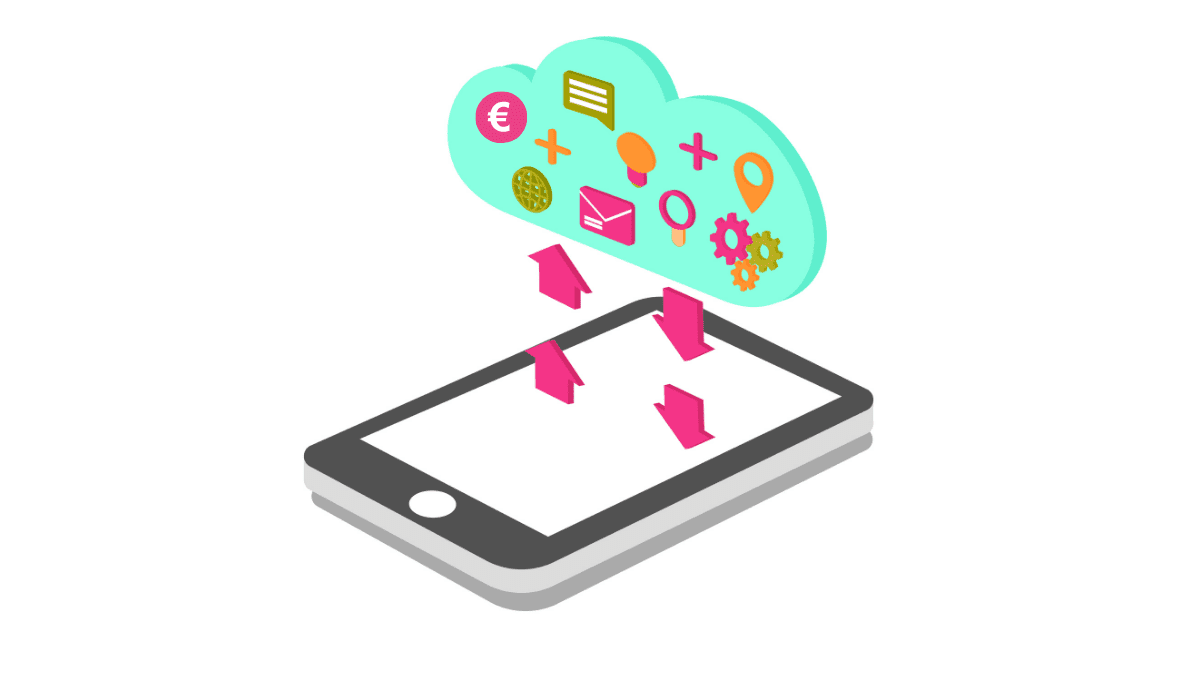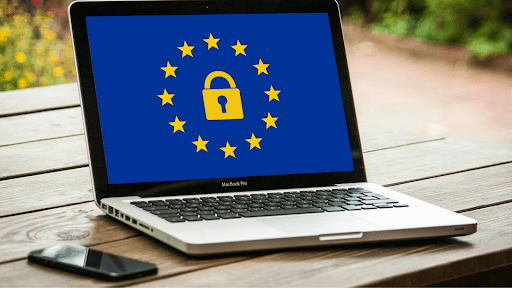
Consumers have attributed a lack of personalisation as one of the prime reasons they switch off from mobile sites, so to successfully connect with your consumers, applying it is somewhat of a no brainer.
>Share this post<

by Lauren Cassidy
October 29, 2020
We’re no strangers to discussing personalisation – and with partners such as Segmentify and PureClarity, it’s something we believe is an integral part of the eCommerce process.
With vast changes in the consumer landscape due to Covid19, consumer expectations are at an all-time high – and personalisation is considered online retail 101. With Black Friday 2020 just around the corner, we’re spending the next few weeks shouting about all the opportunities available to retailers and the preparations they should make to maximise sales and conversions. Our current focus: mobile commerce (or mCommerce, if you will). Last week we delved into the areas of mCommerce that retailers should optimise to provide the best possible experience for their consumers.
This week, we’re diving a little deeper and getting up close and personalised with their handheld devices. (See what we did there.) It’s estimated we spend approximately 7 years of our lives on our phones – so isn’t it crucial that this time is well spent? Consumers have attributed a lack of personalisation as one of the prime reasons they switch off from mobile sites, so to successfully connect with your consumers, applying it is somewhat of a no brainer.
With vast changes in the consumer landscape due to Covid19, consumer expectations are at an all-time high – and personalisation is considered online retail 101. With Black Friday 2020 just around the corner, we’re spending the next few weeks shouting about all the opportunities available to retailers and the preparations they should make to maximise sales and conversions. Our current focus: mobile commerce (or mCommerce, if you will). Last week we delved into the areas of mCommerce that retailers should optimise to provide the best possible experience for their consumers.
This week, we’re diving a little deeper and getting up close and personalised with their handheld devices. (See what we did there.) It’s estimated we spend approximately 7 years of our lives on our phones – so isn’t it crucial that this time is well spent? Consumers have attributed a lack of personalisation as one of the prime reasons they switch off from mobile sites, so to successfully connect with your consumers, applying it is somewhat of a no brainer.
Applying personalisation
Mobile personalisation is a more specific use of data relating to demographics, interests, behaviours, life stage, location, time, etc. as a deep insight for enhancing and customising marketing messages across mobile devices. As with its title, retailers should remember that on this device, consumers are mobile – moving around, preoccupied and therefore much less likely to enter lots of information and need instant gratification.
The more that can be implied from the consumer’s location and other phone information, the more likely consumers are to engage further. (Although privacy does need to be considered at the same time.) Therefore, if you can present these touchpoints in a timely and relevant manner in an optimised for a small screen the more likely you are to see conversions.
Essentially, you are aiming to make the shopping experience more convenient and tailored to the consumer, with each method growing more personalised than the last.
Deep Linking
Deep linking is a straightforward means of personalisation, that really aids the “on the go aspect” of mobile shopping. It is simply a means of directing the customer to a specified location on your mobile site or app instead of taking them to the homepage.
This massively improves the user experience by creating a steady flow for the consumer from where they are to where they want to be. There is a little possibility of getting distracted midway and hence, deep links boost the chances of consumers completing the customer journey.
2. Geotargeting
Location-based marketing or Geotargeting, allows marketers to segment their target market based on where their customers are or have been and deliver ads or content to them to make more relevant contact with them. Geotargeting begins when mobile phone users opt-in to share their location through their apps or search engines. If a brand wishes to serve an ad or push alert in real-time, they will have previously defined the locations that will trigger those actions when the consumer enters a pre-defined area.
3. Product Recommendations
We have gone into more detail on personalised recommendations in some of our previous blogs – but the short of it is that personalised recommendations are based on user behaviour. These are items that have been frequently viewed, considered, or purchased with the one the customer is currently considering. If 50% of customers who buy a particular pair of jeans also buy a particular shirt to match, it makes sense to display this item on the product page.
The difference between desktop and mobile recommendations is the ability to target your consumer with push notifications. Let’s look at this in more detail.
Push Notifications
A push notification is a message that pops up on a mobile device and app publishers can send them at any time – which means they are ideal for inserting neatly into your consumers’ lifestyle. The great thing about push notifications is their flexibility – they can be used to share one particular personalised message at a time straight to your consumer, eliminating the worry of being lost to a sea of emails, promotions folders or spam.Use of segmentation can have a very positive impact on your conversion rates as it will allow you to deliver the most tailored messages. Of people who open a push notification, 54% of users convert from segmented pushes, compared to only 15% who convert from broadcast messages.
This kind of targeting can be particularly effective around shopping holidays such as Black Friday, Cyber Monday and Christmas. Encourage impulse purchases with flash sales and updates on what’s going out of stock – particularly if it’s previous purchases made by the consumer.
However, these notifications have also evolved and you can now greet your customers with what is known as “Rich Notifications”. eCommerce has the third-highest opt-in rates for push notification behind travel and finance but only 8% of marketers use rich push notifications – therefore there is a massive opportunity for retailers to differentiate themselves on this front.
These are push notifications that have been enriched with images, gifs and in some cases, videos and sounds can be used. It may seem like a small addition to be classified as “rich”, however, a recent study found that of over 118 million push notifications, those sent with images had a 9% higher CTR than traditional push notifications.
But what if their push notifications are off? In-App Messages can be used to appear over app content with relevant messaging, which allows for an app to reach all users, even those that aren’t subscribed to push notifications. They can also be enriched with video and imagery and have 18-20 times the CTR than that of a typical push notification.
However, retailers should bear in mind that the right balance needs to be struck though as over 70% of push notification users classify too many interruptions as “Spam” and can result in losing your audience.
Loyalty Schemes
In our last blog, we touched briefly on the opportunity available to retailers who focus on synchronising their loyalty schemes across all devices. Not only does this help customers feel happier that they didn’t lose out by alternatively to instore, it creates an opportunity for brands to create a hyper-personalised experience.When a customer signs up with their email address or phone number, that’s the first chunk of data your business receives from that customer. From here, every single purchase the consumer makes provides you with further insight into the next item this specific customer wants. With loyalty programs, every transaction is logged so that points can be accrued and rewards redeemed – but your business also gains valuable insights into information such as each customer’s preferences.
With this info, brands can send push notifications pertaining to “opportunities to gain points” and “exclusive tailor-made offers” which can reach the consumer at the most opportune times.
72% of today’s customers would rather save a digital loyalty card to their phone, than carrying around a plastic card as digital cards are more convenient and provide easier access to these offers and points – and given that consumers are more likely to stick with a brand that offers a loyalty program retailers should consider this and their goals for customer retention following Black Friday this year.
Conclusion
mCommerce presents massive opportunities for retailers this Golden Quarter, but simply adding it to your channels of distribution is not enough. Brands need to get personal with their mobile messaging and ensure their CX is built on the existing relationship and convenience in order to provide a competitive customer journey.
Consumers are savvier than ever and will be turned off by generic touch-points that do not provide them with real value, or if they feel they are simply part of the masses. Remember there are more people online shopping than ever before, so going the extra mile and applying the techniques above can improve your customer experience and help you to retain customers that may be visiting your site for the first time during the Black Friday sales.
More to explore
In the next few years, we are foreseeing an impressive increase for the global retail industry. While this can be beneficial for the global eCommerce industry, it also means that there will be more competition, as well.
European Data Protection rules were launched back in 2018, to protect the confidentiality of our personal data but even four years later, there is still a lack of understanding among companies and consumers about how to comply with the best practices. Big tech companies, like Google or Amazon, usually refer to the acronym GDPR, to explain the rules that verify the data, so it is not used inappropriately, but to add details to create confusion.



